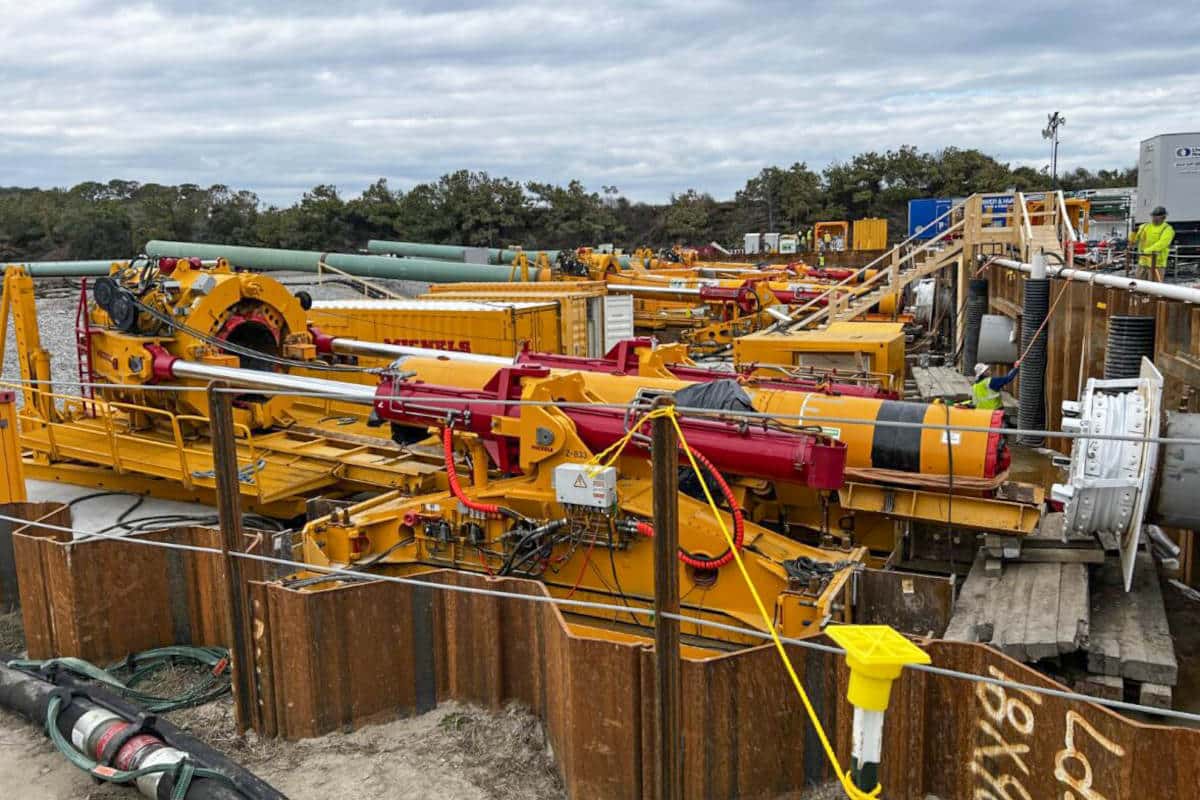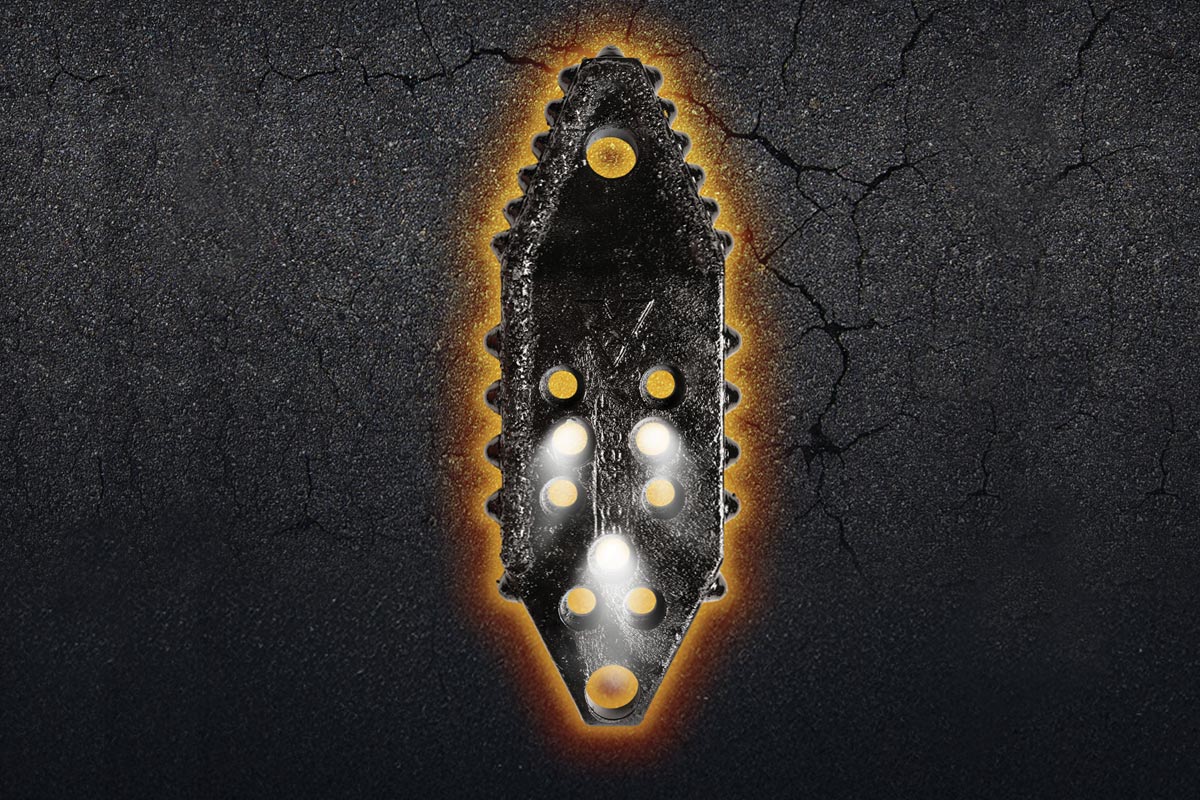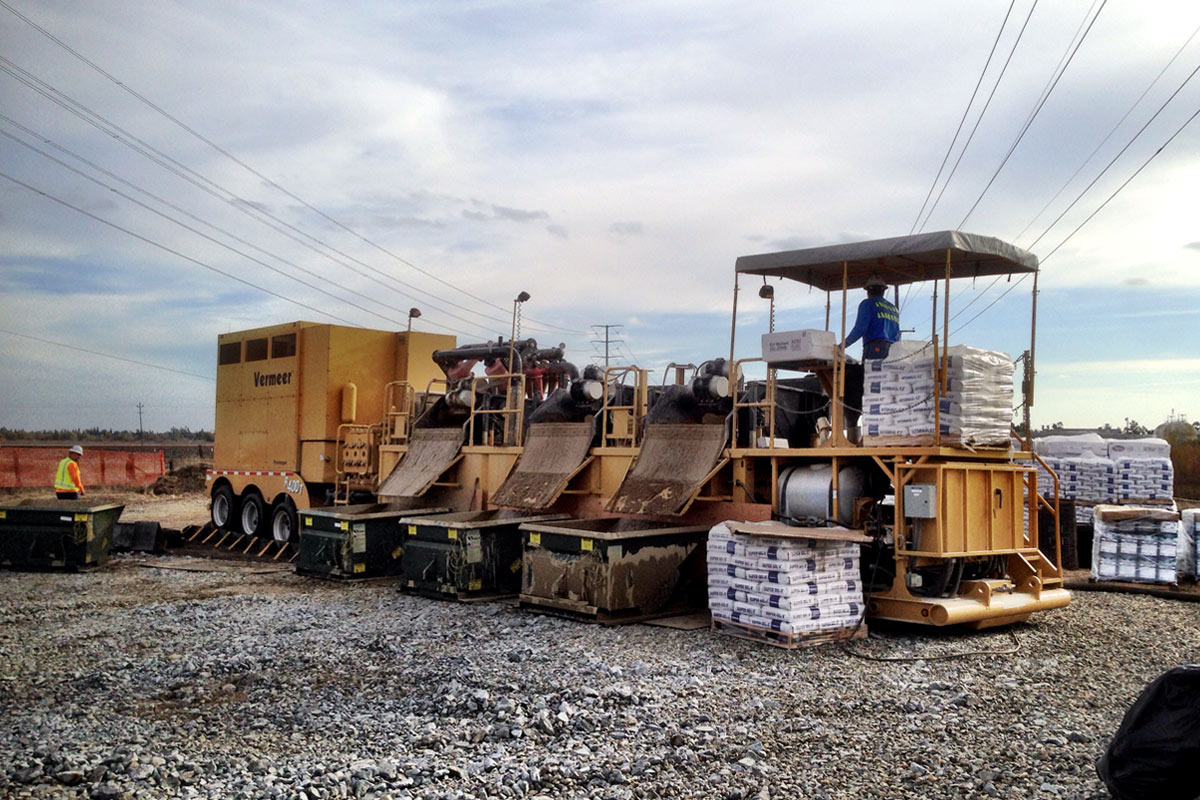Afghan SBU Flies Below Bagram Airfield
September 21, 2011
 Many of today’s trenchless projects are in challenging conditions, but completing a crossing in a war zone adds a new wrinkle to the situation. Rocket strikes and unexploded ordinance buried in the bore path were very real possibilities at the Kilo Culvert, recently completed using a Robbins Motorized Small Boring Unit (SBU-M) on Aug. 16.
Many of today’s trenchless projects are in challenging conditions, but completing a crossing in a war zone adds a new wrinkle to the situation. Rocket strikes and unexploded ordinance buried in the bore path were very real possibilities at the Kilo Culvert, recently completed using a Robbins Motorized Small Boring Unit (SBU-M) on Aug. 16.Wind, dust, and temperatures above 100 F were regular occurrences during excavation.
The 420-ft crossing is below the taxiway at Afghanistan’s Bagram Air Force Base. The crossing is part of an extensive drainage plan designed by CH2MHill for the Army Corps of Engineers. When rain or runoff from the snowy mountains drain into the valley occupied by the base, the dry clays of the area do not absorb the water, leaving potential hazards around the two-mile runway. The Kilo Culvert will divert water into nearby Coyote Creek, which will be further diverted off the base by the planned Russian Culvert.
 A crew of three Robbins field service personnel was onsite throughout the project, assisting Turkish sub-contractor Yuksel in the construction of the crossing section below the runway. “We launched the machine in less than a month. They swept the area for mines prior to construction, but detection is only accurate to about 4 ft deep, whereas our bore pit was 10 ft deep,” said Scott Fisher, Field Service Consultant. Though there was significant reason for caution, no mines were detected during the excavation.
A crew of three Robbins field service personnel was onsite throughout the project, assisting Turkish sub-contractor Yuksel in the construction of the crossing section below the runway. “We launched the machine in less than a month. They swept the area for mines prior to construction, but detection is only accurate to about 4 ft deep, whereas our bore pit was 10 ft deep,” said Scott Fisher, Field Service Consultant. Though there was significant reason for caution, no mines were detected during the excavation.Field service personnel managed the setup, maintenance, and operation of the SBU-M and auger boring machine (ABM). Due to the very dry clay material with little rock, Yuksel selected a 48-in. diameter SBU-M with soft ground cutterhead. The specialized soft ground head was designed with tungsten carbide bits and large muck openings for a smooth flow of material. If rock was encountered, the openings allowed for access to the cutterhead to change the tungsten carbide bits to disc cutters while in the tunnel.
 The Robbins SBU-M was continuously steered to the specified .05 percent downgrade from an operator’s console inside the rear shield. At machine launch, the SBU-M was bolted to the lead steel casing. An in-shield motor and drive train provided torque to the cutterhead, while forward thrust was provided by the ABM. Muck was continuously removed through an invert auger inside the casing.
The Robbins SBU-M was continuously steered to the specified .05 percent downgrade from an operator’s console inside the rear shield. At machine launch, the SBU-M was bolted to the lead steel casing. An in-shield motor and drive train provided torque to the cutterhead, while forward thrust was provided by the ABM. Muck was continuously removed through an invert auger inside the casing.“I worked on the project every day for six weeks, and I was able to double production to 5 in. per minute. When the machine holed through, the bore was surveyed and it finished only 0.2 in. low and 1 in. to the right over 400 ft,” said Matt Weaver, Robbins field service technician. The specifications for the project stated a much larger allowance of up to 4 inches off line and grade. Crews will now perform grouting in order to minimize settlement below the runway, and will install reinforced concrete pipe as the final liner.





Comments are closed here.